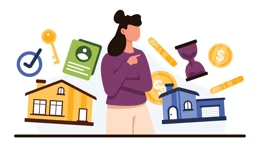
Photo by Alice Davies / Unsplash
Home equity is a powerful tool, and, just like any other, it must be handled with care. As much opportunity as leveraging your home’s equity may present, remember that it requires thought, preparation and commitment.
What is it? Home equity is the difference between the market value of a property and the amount of debt that is currently owed on that property. In other words, if a residence appraises for $200,000 and its current mortgage balance is $150,000, then the amount of home equity is $50,000.
Home equity is derived from several components, including the value when the home is purchased less the amount borrowed to acquire the property, any improvements made, payments of principal reduction and market appreciation that typically occurs over time.
The power of home equity lies in the asset’s value, and the use of home equity provides funding for a variety of applications. Homeowners may “tap into” their equity for purposes such as education, debt consolidation, property improvements and others. However, it is important to understand that a home equity loan is a debt that must be repaid.

Typically, two types of home equity loans are available. These include the standard first or second mortgage that allows the homeowner to take cash out at closing and the home equity line of credit, or HELOC. Banks, credit unions and mortgage companies will generally have the real estate appraised and offer access to 80 to 90 percent of the available equity.
The first mortgage involves a refinance of existing mortgage debt, paying off the current mortgage and replacing it with a larger one that incorporates the new cash-out amount with renegotiated monthly payments and other terms.
A traditional second mortgage is also a term loan with a monthly payment. The current first mortgage remains in place, and the second mortgage is an additional lien on the real estate.
The HELOC is a true line of credit that provides open access to a predetermined amount of equity. Borrowers may request funding by contacting the financial institution, utilizing a special type of paper check or even using a credit card. HELOCs are issued based on available equity and offer a specific draw period, usually five to 10 years, during which the funds are available. During this period borrowers are typically billed monthly only for accrued interest.
Borrowers may reduce their principal balance through payments during the draw period and then re-borrow the funds at any time. However, when the draw period ends, the entire balance is placed on payments of principal and interest in order to amortize the debt fully.
In each case, traditional term loan or HELOC, borrowers must make monthly payments. Homeowners who choose an equity loan for financial needs should carefully evaluate their future ability to make those payments.
Traditional term loans are usually priced with a fixed rate, while HELOCs are priced with variable rates calculated with a margin above prime rate. The difference in pricing philosophy is due to the fact that HELOCs do not require immediate principal reduction and the lender is committed to re-loan the proceeds during the draw period. Both types of home equity loans include closing costs to pay for appraisal, recording of financing instruments and other charges. Lenders will sometimes offer a “no closing cost” and/or “teaser rate” promotion, typically requiring a minimum loan amount and, in the case of the HELOC, a minimum initial draw at closing.
Home equity loans are convenient and popular options that fulfill a borrower’s need for cash, offering flexibility and allowing individuals to manage their cash flow and debt load.
If you are in the market for a home equity loan, consider the available choices and proceed from an informed perspective.
See also: Financing the Future
About the Author
Adam Headley is a writer and career banker with more than 30 years of experience in finance and lending. He has written extensively on the varied aspects of building, purchasing and owning a log or timber home.











